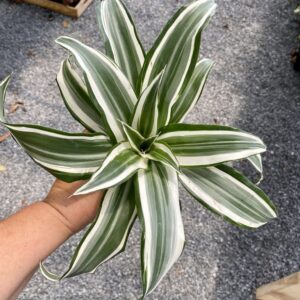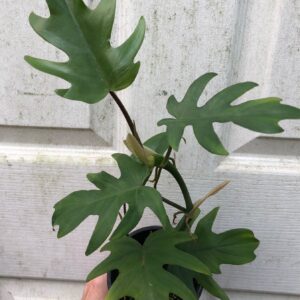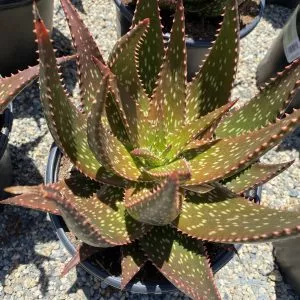Table of Contents
There is nothing more stunning than this fluffy feathered plant added to your houseplant collection.
Rufibarba has green leaves with a maroon underside with the most unusual leaf shapes found. However, do not confuse it with Calathea Lancifolia which looks similar. Many tropical plant collectors refer to it as the furry feather Calathea or the Velvet Calathea.
While it comes with quirks, we can proudly tell you it is easy to care for compared to the others in the family.
What is the Calathea Rufibarba, and What Makes it So Special?
You decided to get yourself the furry feather plant. However, did you know it originates from the Amazon rainforest in parts of Brazil? Another outdoor plant similar is the Goeppertia Rufibarba, but the latter has a subtle pattern.
Your plant will grow long yet slender with wavy leaves of light green shade when young.
Once it matures, it transforms into a dark green upper side. The fantastic thing is the Calathea Rufibarba green underside is maroon or can be a burgundy shade. The unique thing about this tropical plant is the underside of the leaves that is fuzzy with hair giving it the nickname fuzzy or furry feather.
Calathea Rufibarba Classification

Calathea Rufibarba Care Basics

While the Calathea Rufibarba green care is an easy plant to care it is a bit fussy when providing the proper nutrition. In addition, bringing the plant home is hard to inspect for pests, as the furry foliage is dense.
We recommend you keep it away from other plants in your home for at least two weeks. If you find your tropical beauty has some unhealthy leaves give it a trim as environmental changes can stress it out.
Humidity and Temperature Requirement

Therefore, how to look after a Calathea Rufibarba depends on different aspects, and the temperature with humidity plays an important part. The tropical plant thrives in warm temperatures between 64° F and 73° F and can survive at temperatures down to 59° F.
Your plant will not enjoy it when it gets freezing and noticeable through the leaves are damaged. However, it will survive in your home with consistent temperatures that are comfortable for you both. Another thing the plant cannot tolerate is low humidity. So here are some strategies to keep your magical plant thriving and happy:
- Place it near other plants to help it take advantage of the microclimate.
- Use a humidifier near your plant, or place a tray with clay pebbles and water underneath it. However, make sure the pot does not touch the water.
- Alternatively, you can mist it daily but can promote diseases, and best not to overdo it.
Plantly found out that, with these fussy plant leaves turning brown, you need to check the ambient humidity and soil not to be too dry.
Ideal Lighting
Yes, we can see your confused face! Where should you place your plant? Just think a bit. Your plant lives in the wild. So where would you find it?
The Furry Feather Calathea Rufibarba you find in humid shaded areas. You need to replicate its habitat in your home, placing it away from the sunlight.
Keep it away from windows and provide added protection from other surrounding plants. Doing this provides your plant with less intense light to make sure its leaves and blooms pop with color.
What Type of Pot Should You Buy?
The Calathea Rufibarba is a real shower with its velvety leaves visible for all. You can pair it with a Sesame Ripple or Gun Metal pot to give it a fabulous finish look. With time, your Calathea will outgrow the vessel, or the soil becomes depleted needing new nutrients.
You will need a pot size or two bigger depending on how fast it grows. The general rule of thumb is to replant it every two years. Find some helpful information later on to repot your plant.
Soil Requirement
How to care for a Calathea Rufibarba when it comes to the soil is similar to most other tropical plants. For your Calathea Rufibarba flowers to survive, they need perfect ground. However, what is impeccable soil?
According to Marlin Bates of the University of Missouri Extension Horticulturist, the ideal soil is half pore space and half solid by volume.
In addition, the water and air should be equal parts as the pore space influences cultivated soils. Thus, your plant needs well-drained mixed soil filled with organic matter. Therefore, the ground needs to retain water yet drain it out.

Using one with clay is a no-no as it doesn’t drain water but retains it and gets muddy.
The same applies to using sand or perlite. The water drains too quickly, and all that is left is dry soil.
- Achieve a perfect balance by mixing your soil or choosing one made for your plant. You can:
- Mix equal parts of potting soil
- Coconut Coir and Compost help retain water
- Vermiculite or Pearlite provides the pore space to remove excess water
Water Requirements
Now that you have the correct soil mixture, it is time to start providing your plant with life, and that is water. The Furry Feather needs frequent watering, but the soil must not be too wet on the surface. Compared to other plants found on Plantly in the tropical section, this one needs watering every five days.
Furthermore, it depends on the size of the pot, temperature, and humidity. So every time you need to water your plant, test it with your finger first pressed into the soil surface. If you find the top inch dry, then you can water your plant. Here are some things you can remember to help your plant survive:
- Try not to overwater your plant as it can cause severe damage to the root with time.
- Use filtered water as hard tap water has other substances that can harm the foliage.
- Calathea Rufibarba brown tips or yellowish leaves mean it is growing slower and is a meticulous water drinker. Try using a self-watering pot to provide it with a steady stream of moisture.
- Lastly, if you use a standard vessel, make sure it has drainage holes at the bottom.
Necessary Fertilizer
The Velvet Calathea has specific timeframes when you need to fertilize it. Furthermore, it is a sensitive plant, and we recommend not over-feeding it. So get out your calendar and make notes when you fertilize your plant.
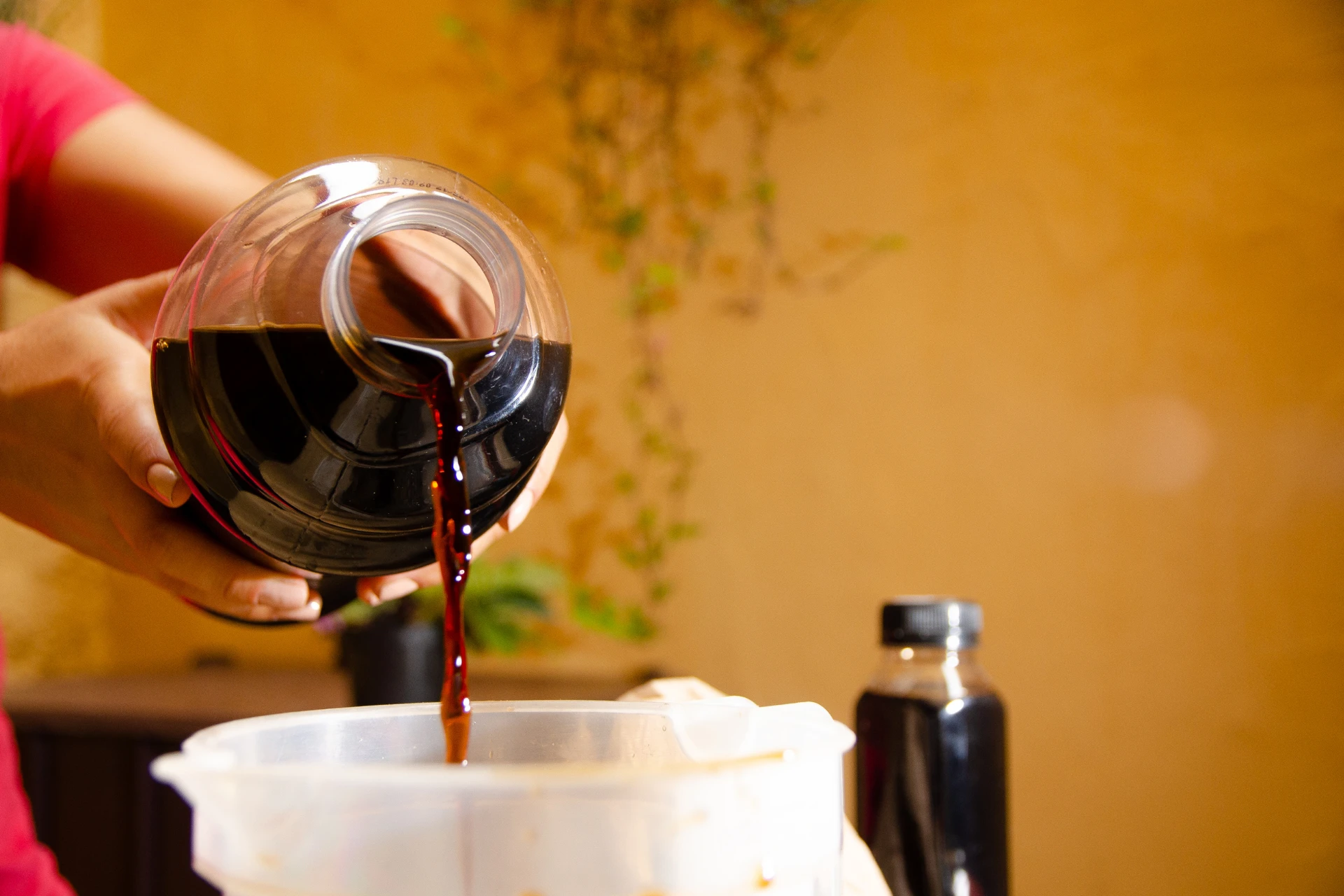
The best time to fertilize is during the growing season, from spring through to summer. Use a liquid fertilizer consisting of a high content of nitrogen added to the water every two weeks. With an organic substance, it will not burn the roots if you do overdose on it.
Repotting
You will find your plant is a slow grower and only needs transplanting every two years. The best time to do this is in spring through to summer. Ensure to get a vessel a couple of inches bigger with enough drainage holes with the correct soil mix. Plantly recommends you do the following:
- Water your plant a day before the time to help make it easier to remove from the pot.
- On the day of repotting, pull it out from the base and tease the roots by untangling them. You can even give it a gentle shake to remove excess soil by doing it over the new container.
- Add the potting mix halfway and create a small crater in the middle for the roots.
- Place your plant, fill it up with the rest of the soil, gently press down on the top, or tap the bottom to settle the soil.
- Give your Furry Feather plant thorough watering and remove the excess water in the dish.
Another fantastic thing is that you can prune your plant anytime if you see yellow leaves not falling naturally. Doing this helps your plant to grow and is very important to do when repotting.
Propagation
Propagate Calathea Rufibara when repotting it. It makes it easier for you. As seeds are challenging to find, using the division technique works best. Once removed from the pot and untangled, the roots use sterilized shears to cut the stem without a root.
You can place your cutting in fresh soil and water it thoroughly. Keep it in the dark spot where it is humid until it roots. Once it shows growth, you can place it with your other plant.
Growth Zone

Another important thing, if you have not invested in the Velvet Calathea, is to check your hardiness zones. Doing this allows you to know if you can keep this tropical plant in or outside the house. The plant thrives in zone 8 or above and grows well in the garden and inside of the home.
Calathea Rufibarba Diseases & Pests
Occasionally you may find common problems with your Velvet Calathea. It is mainly caused by hard tap water, humidity, inconsistent watering, or intense air currents. In addition, it is too close to heaters or air conditioners. If the soil is too wet or dry or there is not enough humidity, the leaves turn brown or yellowish.
To prevent limp foliage, do not hide them away in a dark corner as they still need bright indirect light. The main pests you will find on your plant are Mealybugs and spider mites. You can easily wipe them away with a soapy water cloth.
Calathea Rufibarba Varieties and Similar Plant
When it comes to the Furry Feather Calathea, you can find other varieties in the species.
Calathea Orbifolia

Calathea Orbifolia‘s candy-striped leaves make a bold statement in any home. This indoor plant has large, circular, robust leaves with a metallic pattern sure to grab the attention of many passers-by.
Calathea Warscewiczii
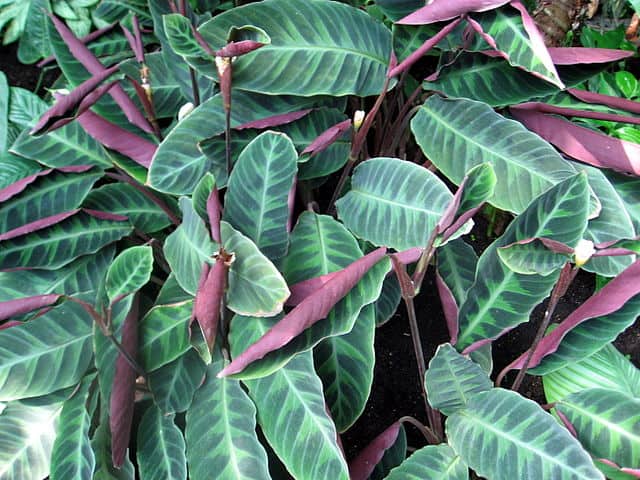
Is a popular Calathea named after Józef Warszewics a heroic polish botnis. It has lance-shaped leaves of velvety dark green with a fishtail pattern.
Calathea Makoyana
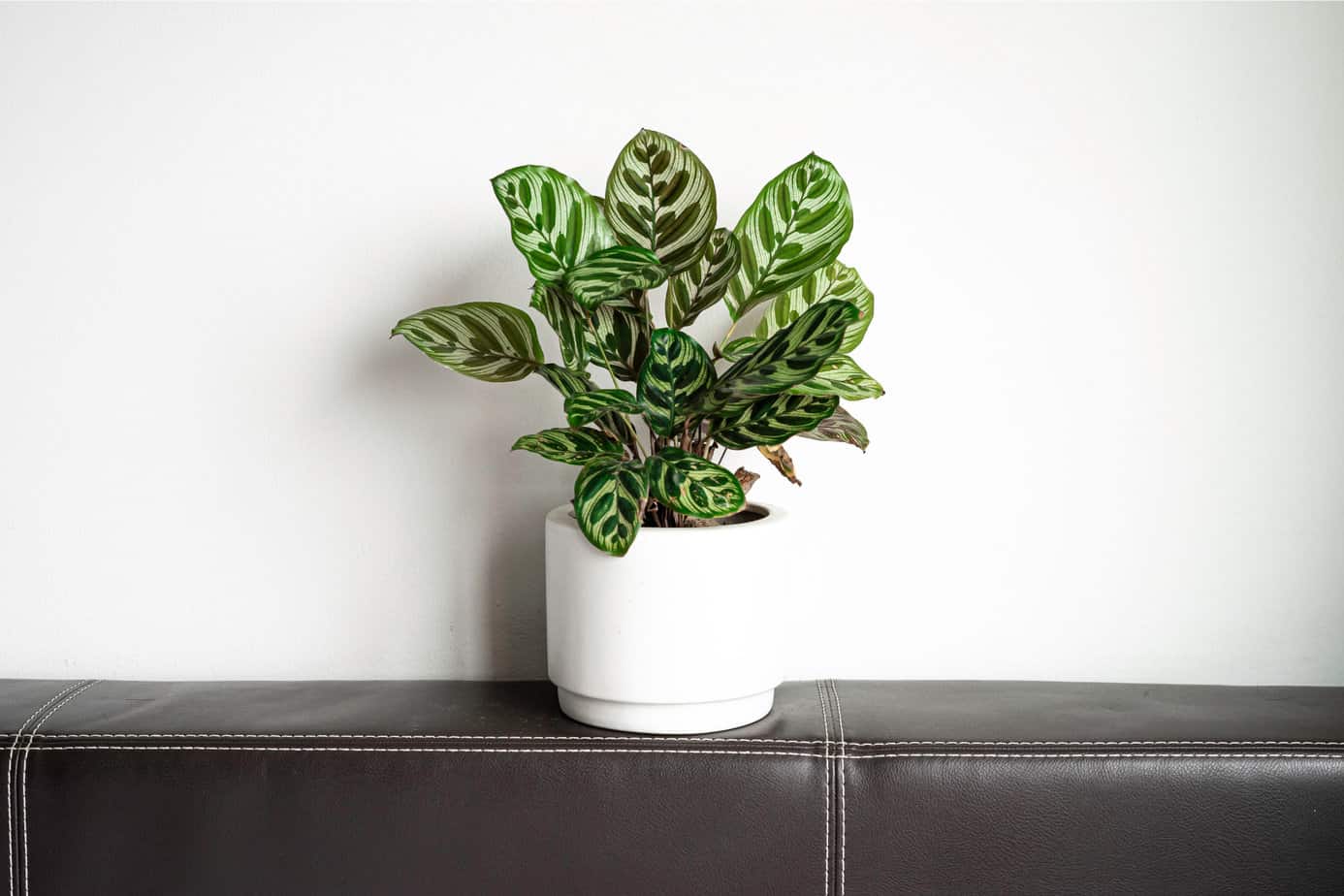
Is a beauty with elaborate, colorful markings and looks like a peacock with its egg-shaped foliage. The plant has thin leaves with a purple underside with cream feathering.
Frequently Asked Questions
If your Velvet Calathea does not have crispy brown/yellowish leaf edges, curling, spotted leaves, or limp, your plant is healthy.
Your plant needs bright indirect light with high humidity and consistent moisture. It can be from overwatering, extreme temperatures, pests, drought, or old age.
Your Calathea Rufibarba green underside or a velvet shade is present because it allows your plant to absorb light at a lower light level.
Calathea rufibarba, the velvet Calathea, requires moderate care. It prefers indirect light, warm temperatures, high humidity, and moist but well-drained soil. Regular watering and misting are essential. It can be a bit challenging for beginners, but with proper attention, it can thrive.
Calathea plants love consistent moist soil. So constant checking on their soil is crucial. Also, they are sensitive to the chemicals present in tap water, which can cause brown tips on their leaves. So use rain water or distilled only when watering. can cause brown tips on their leaves.
Whether you want to buy, sell or simply reach out to other plant enthusiasts, Plantly is the right place to be!
In stock In stock In stock In stock (can be backordered)
$14.00
Sold By:
Smoot's Farm
Dragon Tree or Dracaena Warneckii White Jewel 4″ Pot Live Plant
Rated 4.89 out of 5 based on 27 customer ratings00
Sold By:
Smoot's Farm
$25.95
Sold By:
SunSoul Plants
$42.95Philodendron Mayoi Plant in 4″ pot, philodendron Tahiti
Rated 4.87 out of 5 based on 98 customer ratings00
Sold By:
SunSoul Plants
$59.99
Sold By:
Succulent Oasis
$63.00Succulent Plant Mature Aloe ‘Apache’ Hybrid
Rated 4.84 out of 5 based on 352 customer ratings00
Sold By:
Succulent Oasis
Free Shipping
$12.50
Sold By:
Gar-Zen Botanical Design
Sansevieria bacularis Fernwood Mikado Snake Plant Ships Free.
Rated 4.86 out of 5 based on 49 customer ratings00
Sold By:
Gar-Zen Botanical Design

